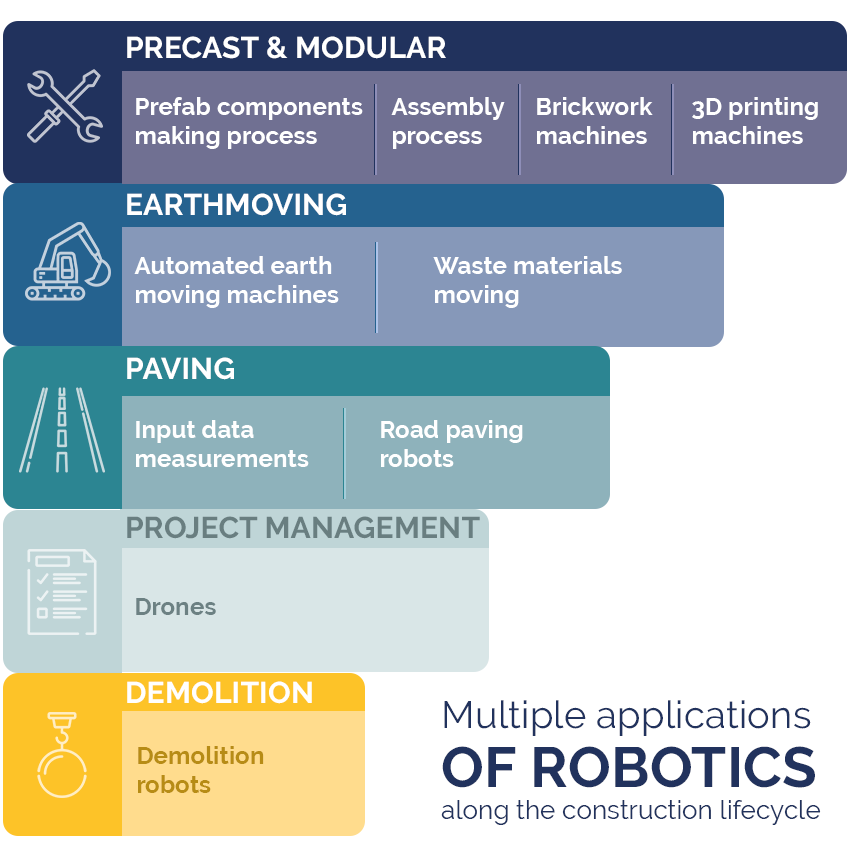Robotics is defined as the branch of engineering that integrates computer science with mechanical and electrical engineering. In recent years it has expanded into the construction sector offering innovative solutions and opening a range of new possibilities. Among the main benefits offered to this sector, there can be found the following ones:
- Processes simplification
- Data digitization to improve decision making
- Automation to facilitate management tasks
Currently, robotics generates hundreds of solutions in the construction industry, among the most outstanding:
Precast & modular constructions
Precast and modular systems take center stage in the construction industry thanks to its simplicity, speed and economy. Today, in the United States, 2% of new single-family homes are precast, while in Japan these systems are common methodologies in their work.
Every day more companies opt for these types of buildings and, in this sense, the contribution offered by robots is essential, both in manufacture and assembly of parts. It is necessary to point out that the most popular solutions are the following:
- In some “off-site” installations the manufacture of components is automated with the support of robots supervised by workers. Then, in the assembly process, the machines automate the assembly of the pieces.
- It is increasingly common to use machines for brickwork, saving time and increasing safety on construction sites.
- 3D printers are, today, one of the main applications of robotics in construction to allow the manufacture of materials and structures.
Earthmoving
Due to the very nature of this first phase of construction, there is greater number of unforeseen events, most of them related to workers safety.
To carry out these actions in a field that will turn into a jobsite, it is necessary to invest both in human and material resources that will be exposed to risk from ground preparation to excavation.
Robots are key to facilitating these actions since they can increase security in several ways, for example, automating cleaning up and earth moving tasks or managing high risk materials.
Paving
Covering floors with pavements can be made with different materials and in multiple spaces. In this case, it is required that resources adapt to the conditions of the jobsite, achieving cost savings and greater effectiveness in results.
Among the most common uses of robotics in this phase, stands out the identification of data through radars, area reading and 3D modeling. In addition, there are robots designed specifically for automated paving of roads.
Project management and demolition
Finally, robotics has generated its own solutions, for example drones or demolition robots. In the case of the former, they have the ability to manage projects and hundreds of companies use it in their works for various actions ranging from 3D modeling to space detection. In the case of robots, they allow time and cost savings in job sites because they are able to dismantle structures in record time.
Multiple applications in the construction sector
More and more entities are betting on robotics for the growth of the sector. According to Tractica’s report on “Robot Assistants and Structure, Finishing, and Infrastructure Robots: Global Market Analysis and Forecasts” it is predicted that by 2025 there will be 7,000 models of robots oriented to the construction industry. Besides, promising research are on the way, including the Builtworlds Association with FMI Corporation to find new perspectives on the application of robotics and potential business models in the sector.
Robotics has meant a radical change in the way companies build, offering a new way of understanding this sector, and expanding the fields of research for its technological development.


